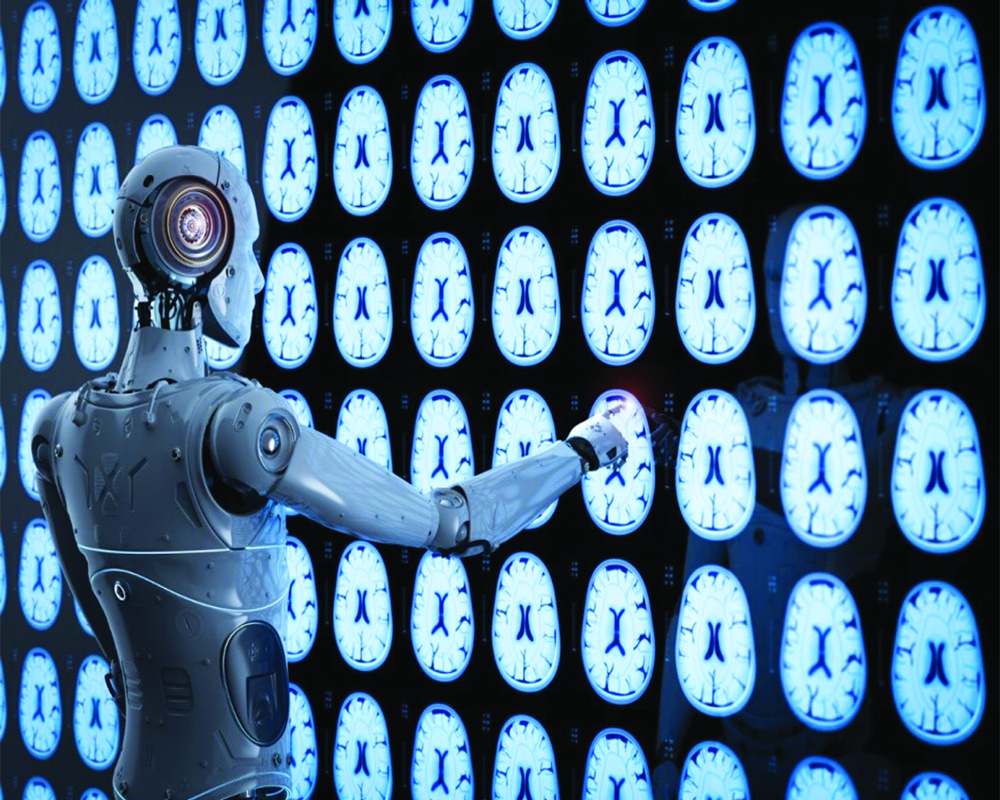AI-guided machines are capable of performing minute surgeries with accuracy and help in transporting substances which are unsafe for humans
In today’s world we are surrounded by Artificial Intelligence (AI) which finds its application everywhere, from science fiction to local hospitals. AI helps medical professionals by relieving them of routine tasks and also makes medical procedures safer and pocket-friendly for patients.
Further, AI-guided machines are also capable of performing minute surgeries with accuracy and help in transporting substances, which are unsafe for humans to handle. In medical systems, call centre staff for websites has increasingly been replaced by chatbots that use Natural Language Processing (NLP) to provide callers with information and manage queries.
In various hospitals and other health institutes, AI technologies such as fuzzy systems, Bayesian networks, artificial neural networks and smart hybrid systems are being used.
AI in medicine can be differentiated into two subtypes — virtual and real. The physical segment deals with robotics that helps in procedures, for instance smart prosthetics for people with disabilities and the treatment of the elderly. The interactive components range from applications for electronic health record systems to neural network-based guide in care decisions for patients.
There is increasing use of AI-powered robots in the surgical environment. Robotics technology can be applied in many areas that directly affect patient care. Some of their applications include disinfecting patient rooms and operating sets and reducing the risks for patients and medical personnel.
They can be used in laboratories to take samples and transport, analyse and store them. Also, the robotic lab assistant can exactly locate the vessel from which the blood is required to be taken and extract the sample without causing pain and anxiety to the patients, who are troubled a lot by the multiple pokes that a doctor or nurse makes for finding a good vein.
AI software also helps primary healthcare doctors in identifying patients who need additional treatment and have specific protocols. It will be used by medical practitioners for commenting, reviewing patient conversations and so on.
The COVID-19 pandemic has changed the world and adversely affected multiple layers of our society. Frontline workers and particularly those who have been in direct contact with patients are exposed to major risk.
To mitigate the spread of the Coronavirus and to protect healthcare workers and patients, medical services had been largely restricted, including the cancellation of elective surgeries. This resulted in a substantial burden for patients and economic loss for various hospitals. It is in situations like this that AI-robot surgeries could be a powerful tool to maintain surgical volumes while at the same time mitigating the fear of contamination by operating procedures on patients without healthcare workers coming in physical contact.
While talking about the Coronavirus, it is imperative to mention that using AI to predict its pattern was able to help mitigate the crisis to some extent. For instance — BlueDot — a Canadian organisation specialising in infectious disease forecasting, used AI to gather data from multiple points.
It was able to predict the COVID-19 outbreak and alert people around, even before the World Health Organisation (WHO) did so. Similarly, an AI-powered chatbot, based in Singapore named SGDormBot, helped in mass screening for symptoms among migrant workers.
The pandemic has also highlighted the need for rapid screening and testing of patients to improve treatment pathways and reduce the risk of cross-infection. The use of AI here, for accessing electronic health records (EHR) of routinely-ordered tests and vital signs can produce an effective tool to screen patients in emergency departments and hospital admission units.
Data collected from EHRs can be further supplemented with data from wearable technology such as smart watches or mobile health apps and medical devices.
With the potential application of AI within the healthcare system, the question remains how this will affect the workforce. According to McKinsey Global Institute, 50 per cent of companies say that automation will decrease the number of full-time staff by 2022 and that by 2030, robots will replace 800 million workers across the world.
Also, automation of clerical processes could potentially have an impact on the non-clinical workforce of the healthcare system. Specialties such as radiology where imaging reports can be automated and produced by AI algorithms may well be the reality.
Of course, the ethics of data sharing and privacy implications for patients and their insurers is debatable. As we enter a brave new world with AI, it entails certain benefits and limitations.
The writer is a Padma Shri awardee and cardiothoracic surgeon credited with India’s first bypass. He is Chairman and CEO of Frontier Lifeline Hospital. The views expressed are personal.


























